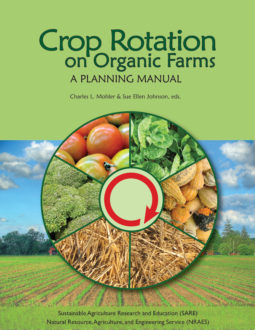This manual provides an in-depth review of the applications of crop rotation-including improving soil quality and health, and managing pests, diseases, and weeds. Consulting with expert organic farmers, the authors share rotation strategies that can be applied under various field conditions and with a wide range of crops.
Crop Rotation on Organic Farms will be most applicable for the Northeastern United States and Eastern Canada, but will also be useful in other parts of the U.S., Canada, and even Europe.
Published by the Natural Resource, Agriculture and Engineering Service (NRAES) and funded in part by SARE, the book includes instructions for making rotation planning maps and discusses the transition to organic farming. Other features include chapters about physical and biological processes in crop rotation, sample crop sequences, a planning procedure for rotating crops, and guidelines for intercropping.
